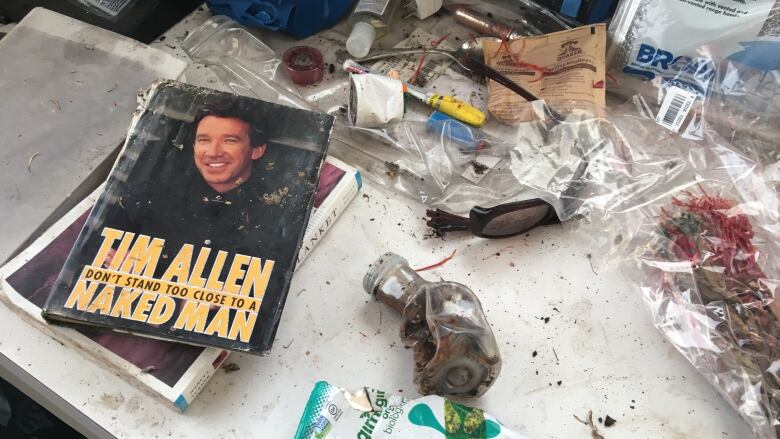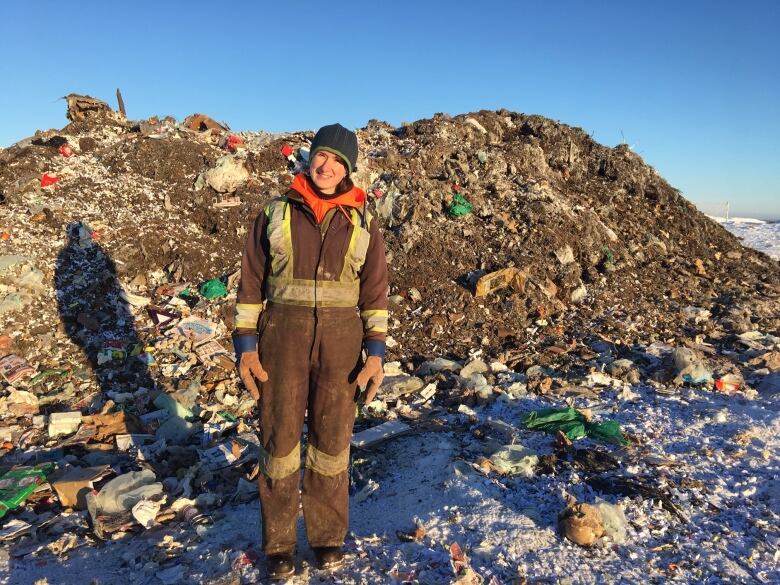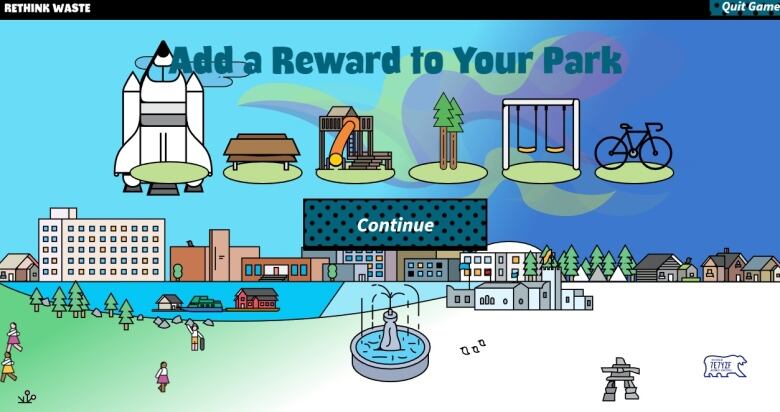Learn why Tim Allen's biography doesn't belong in Yellowknife compost
City and Ecology North working to educate residents on waste disposal

Tim Allen's 1994 autobiography Don't Stand Too Close toa Naked Manmay or may not be garbage,but the City of Yellowknife's compost facility definitely doesn't want it even if it is technically compostable.
The book is one of dozens of strange items found byEcology North's compost specialist Dawn Tremblayat the facility.
Tremblay stresses most residents do get it rightwhen composting.
But peculiar objects, likestuffed toys, Keurig K-Cups, sunglasses, curling irons, old electronics and even glass shards,still end up in the pile.
"Sometimes we'll see acompostable bag with compost inside, and it's looking great," she said. "But it will have a plastic bag around it, so it's double bagged with plastic it's so close except for that plastic bag."
Tremblay said she can understand why this happens, as bigger municipalities allow plastic bags in compost because they have equipment to mechanically separate it from organic waste.

"One of the operators and I were out in the pile. It was December," she said. "It was dark we were picking through, pulling out things and all of a sudden the creepy soundtrack from like a haunted house starts and then I found these."
Tremblaylaughed and held up astring of Halloween lights shaped like human skulls.
Thecity's compost program has been phased in over four years, with the final neighbourhood joining in November. In 2017, she said the city diverted a grand total of 511 tons of waste from the dump.
Heat it up, break it down
The road from compost to usable soil,whichTremblaymonitors at the solid waste facility, can take one to two years.
The pile begins to heat up as microbes slowly break it down ideally to above 55 C for a period of 15 days and it must be turned five times during this period.
That's because the microbes need air to do the job.
Tremblay monitors the pile's chemical balance throughout this process and then adds shredded paper and wood chips, if needed.
"Regular paper we ask you put into recycling first."
Too much paper can alter the pile's chemical balance, which is why residents should refrain from throwing itemslike aTim Allen biography intheir green cart.

After that, the a row of compost, also known as awindrow,goes through a curing phase where it cools off and stabilizes.
Once the pile has completely broken down into soil, the city sends samples to a southern lab for testing to make sure it's healthy.
City creates video game to teach where waste goes
To help with education, the City of Yellowknife has created a solid-waste video game.
Players decide whether batteries, aerosol cans, glass bottles, tin cans, straws and other refuse should go to the waste facility, blue bins, organics bin or the bottle shop.
At the end of each round, players use points they earn to populate their own city park with objects such as a rocket ship, water fountain, pirate ship, dinosaur, birds and even a big red dog.
"It's kind of a fun way to educate citizens on what goes where in terms of the waste stream,"saidMikeAuge, manager of sustainability and solid waste management.

The city is also working to include apartment and condo dwellers in its compost program over the next two years.
Auge says residents who want to join in can contact their landlord or condo corporation and the city willhook them up with a green cart for their building.












_(720p).jpg)


 OFFICIAL HD MUSIC VIDEO.jpg)
.jpg)



























































































